International Steel Prices
Rig Counts Down in US and Canada
Written by Becca Moczygemba
March 31, 2023
Rig counts are down in the US and Canada this week, according to the latest data from oilfield services company Baker Hughes.
The total US rig count was 755 for the week ended March 31, down three rigs from the week prior. The number of active oil rigs in the US dropped by one from the prior week’s 593. The number of gas rigs fell by two to 160. Compared to this time last year, the US count is up by 82 rigs, with oil rigs up 59, gas rigs up 22, and miscellaneous rigs up one, respectively.
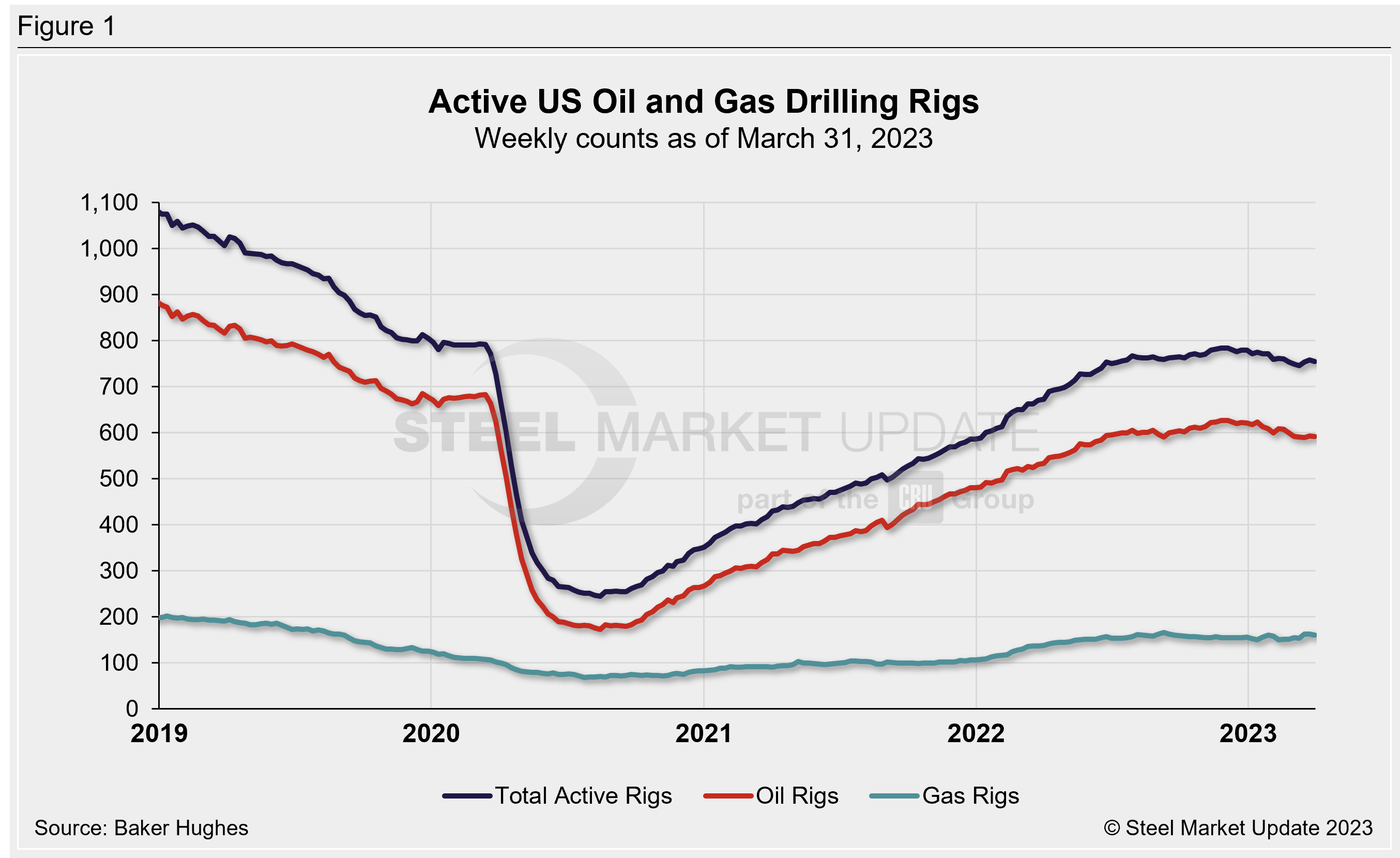

The total number of active Canadian rigs fell to 139 this week, down by 26 from the previous week. Oil rigs in Canada dropped to 58 from 86, while gas increased from 79 to 81. The Canadian count is up by 15 rigs compared to last year, with oil rigs accounting for most of those gains.
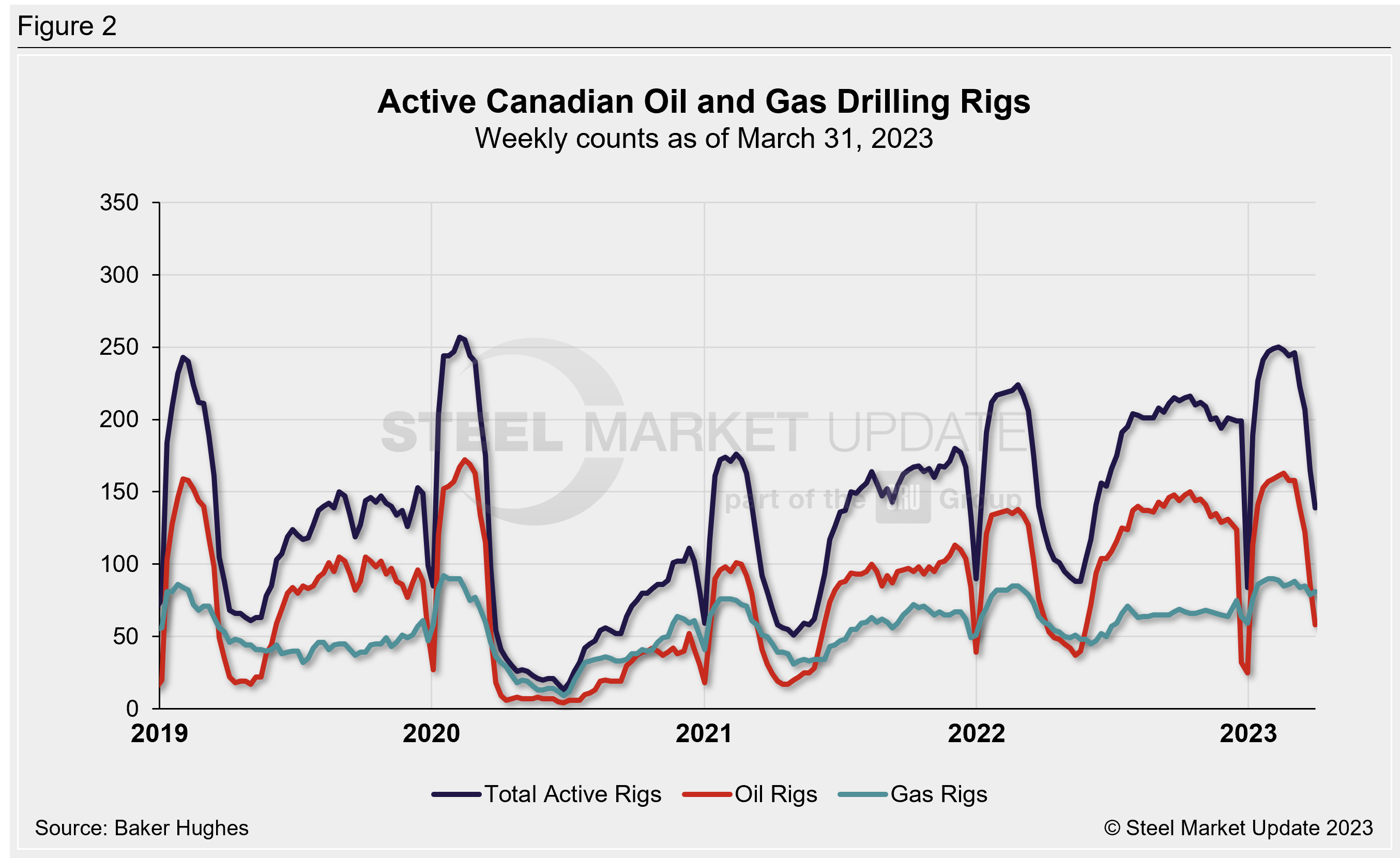
The international rig count increased by 14 to 915 rigs for the month of February vs. the prior month and is up by 28 rigs from the same month last year.
The number of oil and gas rigs in operation is important to the steel industry because it is a leading indicator of demand for oil country tubular goods (OCTG), a key end-market for steel sheet.
A rotary rig is one that rotates the drill pipe from the surface to either drill a new well or to sidetrack an existing one. Wells are drilled to explore for, develop, and produce oil or natural gas. The Baker Hughes Rotary Rig count includes only those rigs that are significant consumers of oilfield services and supplies.
Steel Market Update regularly publishes an in-depth “Energy Update” report covering oil and natural gas prices, detailed rig count data, and oil stock levels. That is available here for Premium members.
For a history of both the US and Canadian rig count, visit the Rig Count page on the Steel Market Update website here.
By Becca Moczygemba, becca@steelmarketupdate.com

Becca Moczygemba
Read more from Becca MoczygembaLatest in International Steel Prices
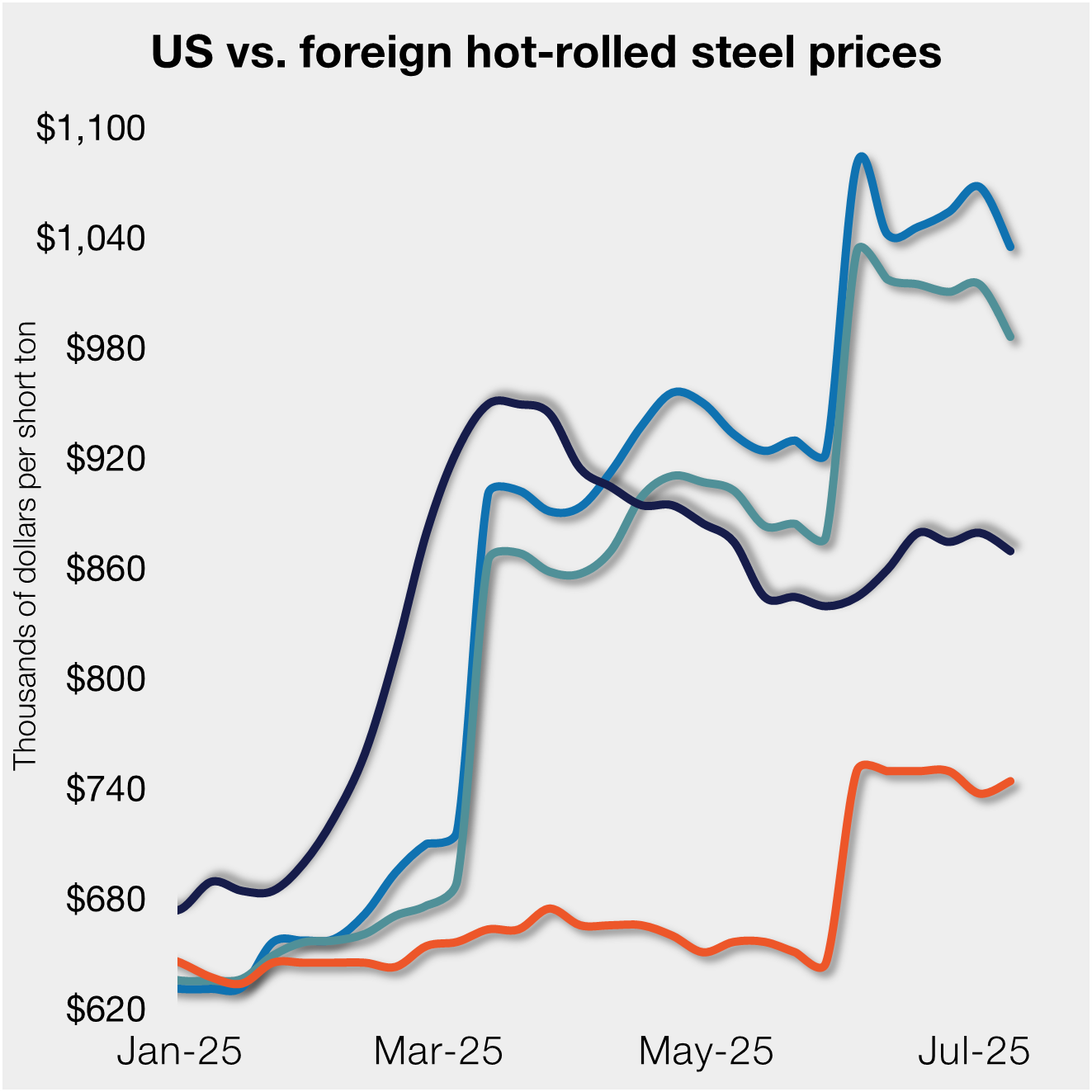
S232 tariffs keep US HR prices below imports from EU
Hot-rolled (HR) coil prices in the US ticked down this week but have fluctuated little over the past month. Stateside tags continue to trail imports from Europe, supported by Section 232 steel tariffs that were doubled in early June.
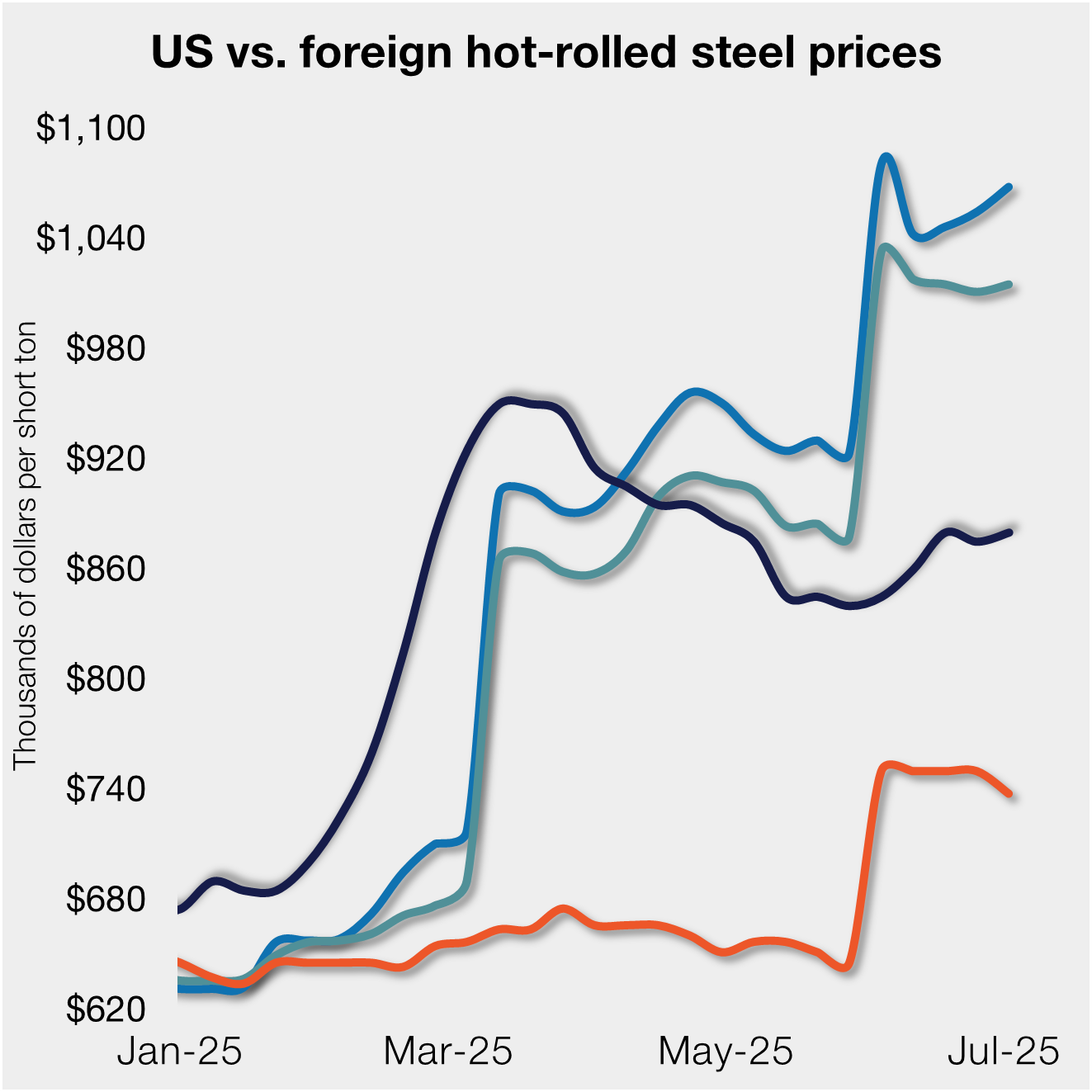
Doubled S232 tariff holds US HR prices below EU
David Schollaert presents this week's analysis of hot-rolled coil prices, foreign vs. domestic.
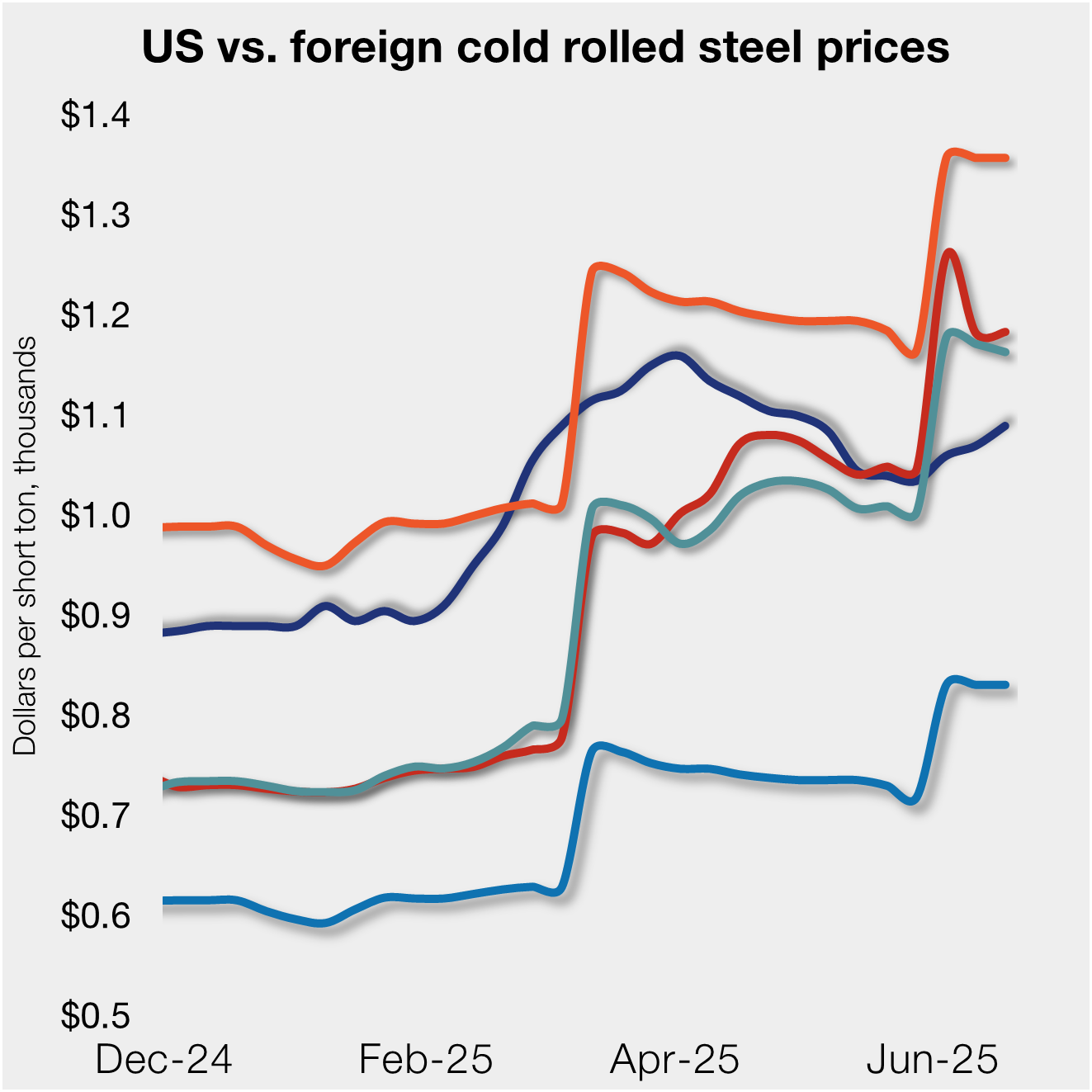
Higher US CR prices inch closer to EU, Japanese tags
US cold-rolled (CR) coil prices continued to tick higher this week, while offshore markets were mixed.
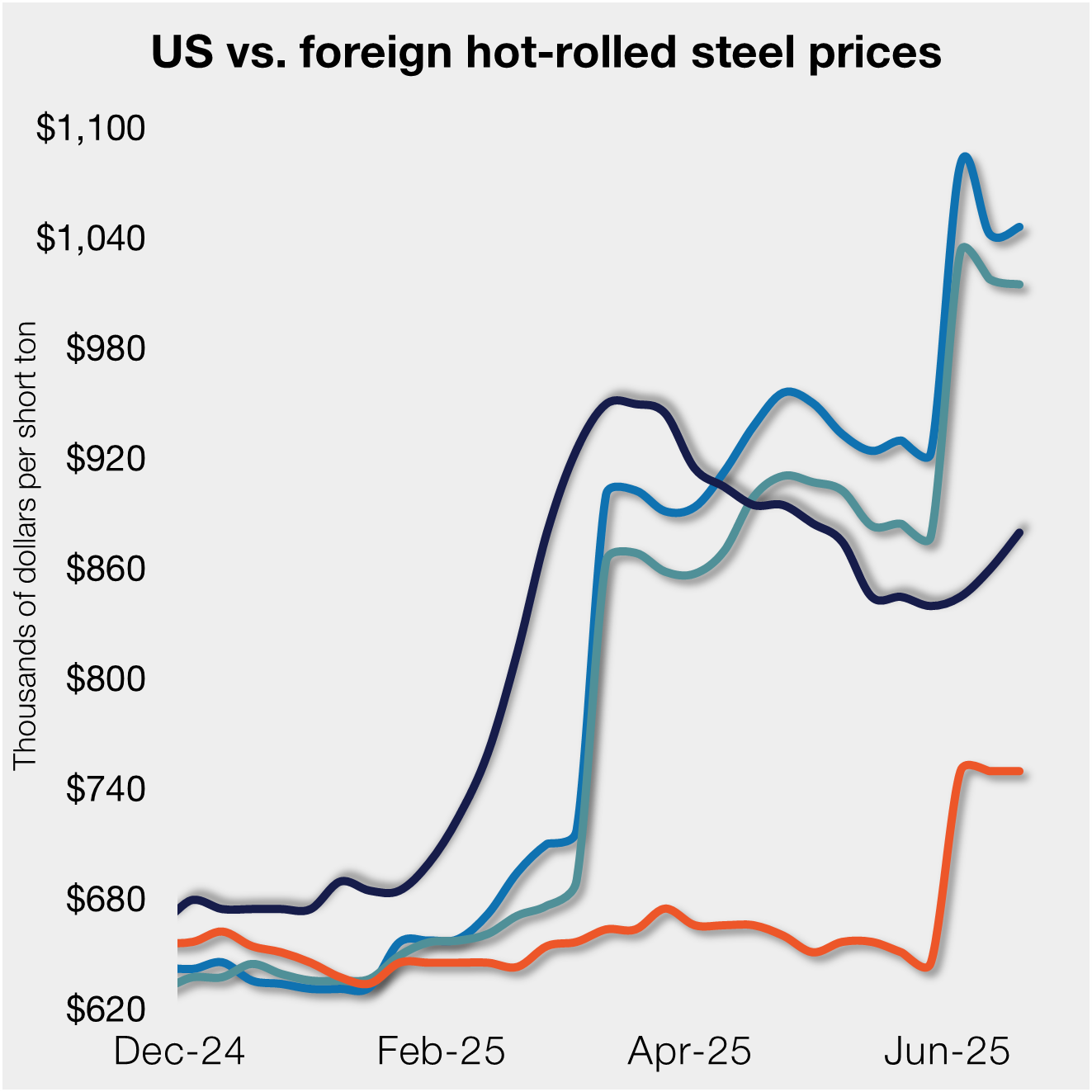
Stacked S232 keeps US HR prices below EU
US hot-rolled coil prices crept up again this week but still trail imports from Europe.
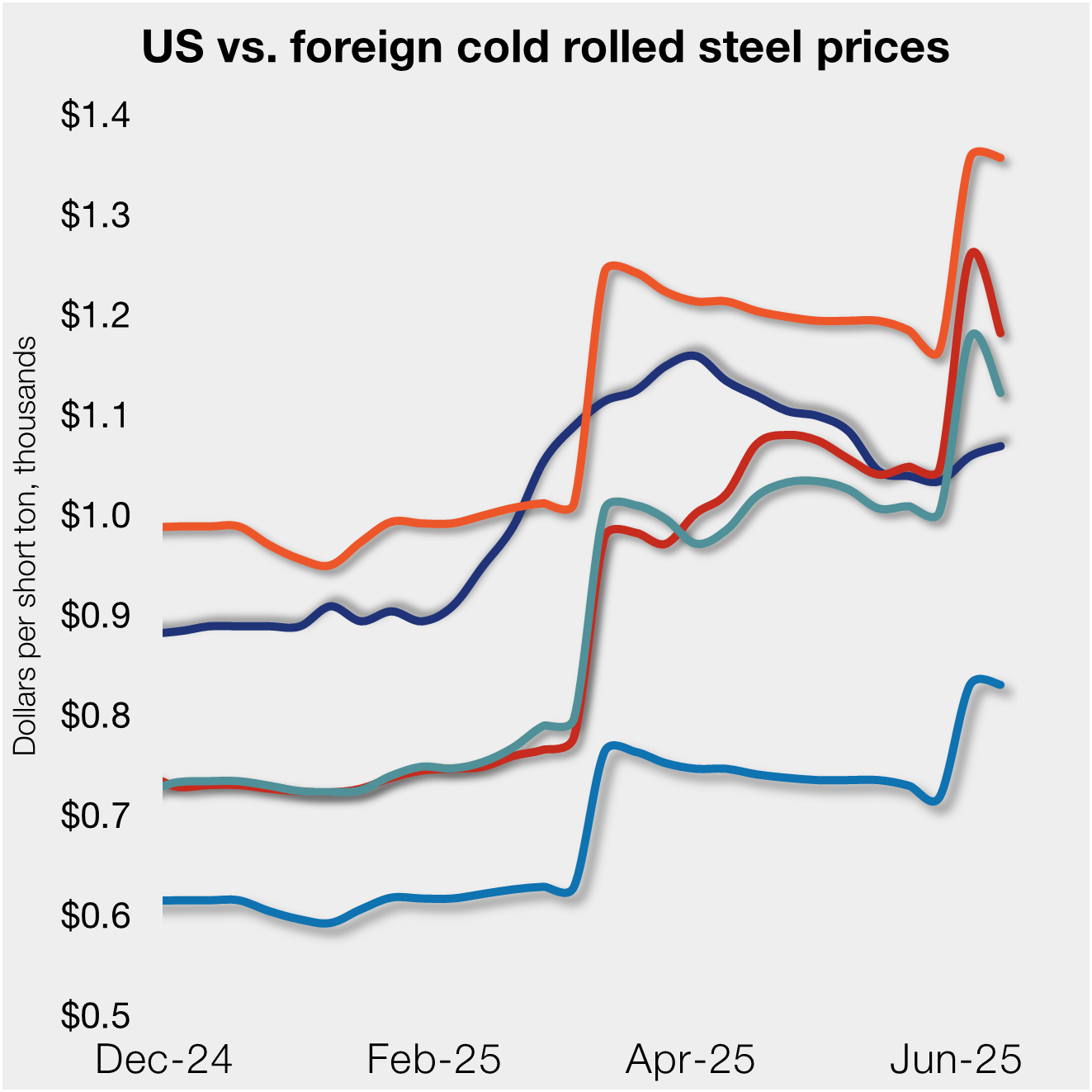
Doubled S232 lifts EU, Japanese CR prices over US tags
US cold-rolled (CR) coil prices edged up again this week, and most offshore markets moved in the opposite direction. But the diverging price moves stateside vs. abroad did little to impact pricing trends. The bigger impact was from Section 232, which were doubled to 50% as of June 3. The higher tariffs have resulted in […]
